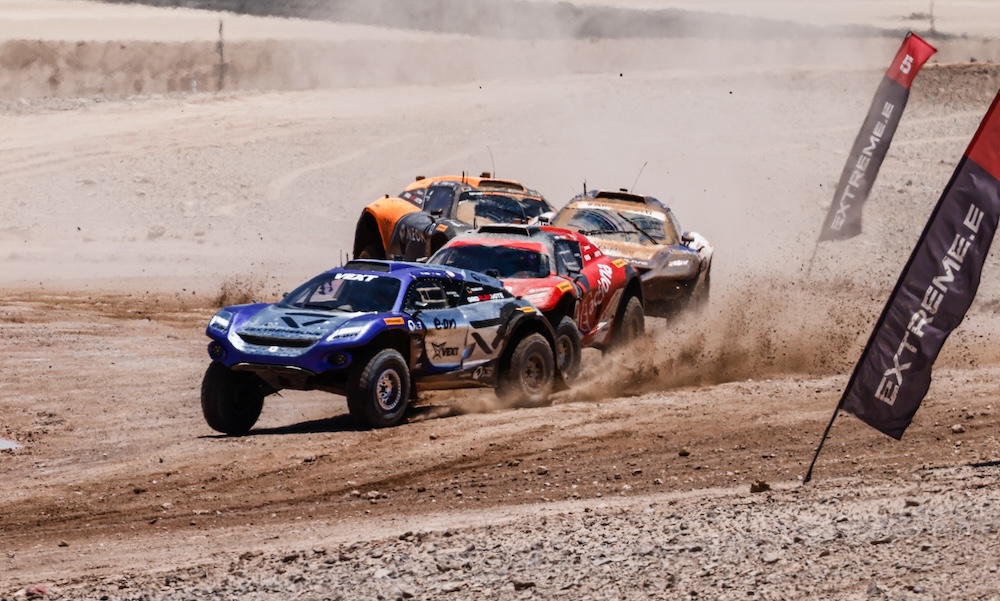
“If you’d have told me last year that we would be P3 in the championship with three wins — joint top amount of wins — I would have taken it,” says Veloce Racing CEO Dan Bailey — who was in a surprisingly positive mood about the Extreme E season considering his team fell at the final hurdle in its quest to become champions of the electric off-road series.
But, given the massive steps the team has taken this year, it shouldn’t be a surprise at all.
After claiming one podium result in two years and featuring a revolving door of high-profile drivers, the team realized it needed to make big changes. Ahead of the 2022 finale, it brought in Season 1 champion Molly Taylor and World Rallycross front-runner Kevin Hansen. Both drivers were tied to long-term deals, signaling the team’s intent. And it immediately yielded results, with the team making it to the final for the first time in 2022 on the pair’s first outing with the team.
It was the perfect springboard for 2023, which began in Saudi Arabia with a maiden victory and a second place the very next day. Veloce had gone from being underachievers to being the team to beat overnight. Except it wasn’t overnight — it was a process that began midway through the preceding season.
Prior to Taylor and Hansen’s arrival, the team had a run of seven events across 2021 and ’22 without making the final, with the two Sardinia rounds in ‘22 — where the team had hoped to rebound and kickstart its campaign a car-destroying crash in Saudi Arabia for the second straight year — proving pivotal for the team’s need to reset.
“I think Sardinia last year was a low point for our team and we took some fairly brutal decisions as to what we needed to change to be competitive,” Bailey explains to RACER. “It included not just the drivers but the management structure of the whole team and this year you’ve really seen that come to fruition with how we’ve performed.”
The changes to the team came amid evolution for the series as well. Originally envisioned as something of a longer-distance formula with single- and multi-car elements, Extreme E transitioned to, and then settled on more of a rallycross-esque format.
“I think the series changed a bit from what we initially thought the skill set would be, which is probably more Dakar spec, really big tracks, changing terrain, which led us to go for the likes of Lance who is a fantastic driver, just has a slightly different skillset to the likes of Kevin,” Bailey explains. “As the series has evolved, it’s moved to a little bit more of a rallycross spec skill set.
“We’ve had to make decisions to ensure that we become this competitive. We made some decisions with drivers and certain team members which didn’t necessarily fit the series as to what we expected it to be, but I’m proud of the fact we reacted and responded and got the right people in for that.
“And that’s not to say the people we had in before weren’t right for what we thought the series was — the series has evolved and we had to evolve with that.”
Hansen feels that when he arrived at the team, the key ingredients were in-place, but it needed to work on its execution, and that a comfortable working relationship with Taylor enabled them to fast-track the outfit’s development.